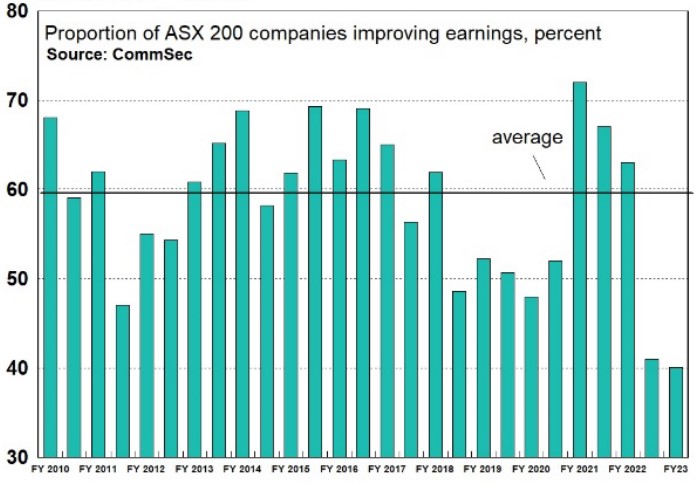Tough economic conditions have impacted many ASX-listed companies. But there’s an easy way to reduce exposure risk.
Australia’s latest corporate earnings season was always going to be a litmus test of how current macroeconomic conditions have impacted companies that operate in a diverse range of industries.
It didn’t disappoint in that respect, based on the full and half-year earnings results for the period that ended on 30 June 2023. The results highlighted the challenges faced by many companies as well as their financial capacity to absorb them.
In this analysis we’ve only focused on the largest companies listed on the Australian Securities Exchange (ASX) that announced their full-year results while the latest reporting window was open from late July to the end of August.
The combination of slower discretionary spending and increased costs, due to high inflation and the subsequent spike in interest rates, caused financial pain for many of the largest companies over the 2022-23 financial year. As a result, they reported lower revenue and earnings, and in some cases cut their dividend payouts to shareholders.
But other companies benefitted, with the weaker economic conditions actually giving them a tailwind to increase their operating margins and revenues, leading to higher net earnings and dividend payouts.
A mixed bag of results
Overall, the latest earnings season contained a mixed bag of earnings results. And it was extremely hard, even for professional company analysts, to pick them beforehand.
In fact the proportion of companies that fell short of investment analysts’ forecasts was higher than the number that met or exceeded them. In other words, there were more profit misses than beats.
Analysis shows that among the top 200 ASX-listed companies that reported full-year results, revenues increased for 76%, however expenses rose for 86%. And, while 84% of companies reported a profit, only 40% actually increased their profit over the previous corresponding period.

On an income level, 87% of the top 200 ASX full-year results reporters declared dividends to shareholders. Around half announced they were lifting their payouts, while 26% reported they would be cutting them, and 14% said they would be maintaining them. The remaining 13% didn’t declare a dividend.
The bigger picture on earnings
The variations in financial results from the latest earnings season, including dividend payouts, were nothing out of the ordinary. Every earnings season is the same in that respect.
Invariably there are a wide range of factors that feed into the results of individual companies. In addition, companies within specific industries are often impacted in a similar way based on the broader prevailing economic conditions and market trends.
For example, the current effects of high inflation and interest rates (leading to slower consumer demand), have eroded profit margins for many companies operating in the same sectors. By contrast, others have been able to leverage the current conditions to increase their profit margins.
This is where broad equities diversification really comes to fore.
When you invest in a single company, you’re basically only buying into that company’s future earnings potential. At times it may do well, but at other times it may not.
When you invest in a few companies you can achieve some equities diversification, unless all of those companies happen to be operating in the same market sector.
To achieve broad equities diversification though, you really need to buy a large slice of the share market.
Which is why a growing number of Australian investors, either directly or through a financial adviser, are choosing exchange traded funds (ETFs) and managed funds to buy a large slice of the Australian share market and do the same to gain broad exposure to international markets.
For example, it’s easy to use one ETF to invest in the top 300 ASX companies in a single market transaction. Other ETFs can be used to gain exposure to thousands of companies listed on United States share markets, or on international share markets.
According to the ASX Australian Investor Study 2023, one-in-five (20%) of the 7.7 million on-exchange investors in Australia now hold one or more ETFs in their investment portfolio. This equates to around 1.54 million Australian investors.
Vanguard’s founder, John C. Bogle, famously said: “Don’t look for the needle in the haystack. Just buy the haystack!”
That is, rather trying to find one listed company or a few companies that may deliver good investment returns some of the time, it’s better to invest more broadly across the wider universe of listed companies to diversify your exposure and capture the market’s overall performance all of the time.
Feel free to contact our investment team to find out how we can help you reach your financial goals. Give us a call at 08 8231 4709 or send us an email at info@centrawealth.com.au.
Article courtesy of Vanguard.


